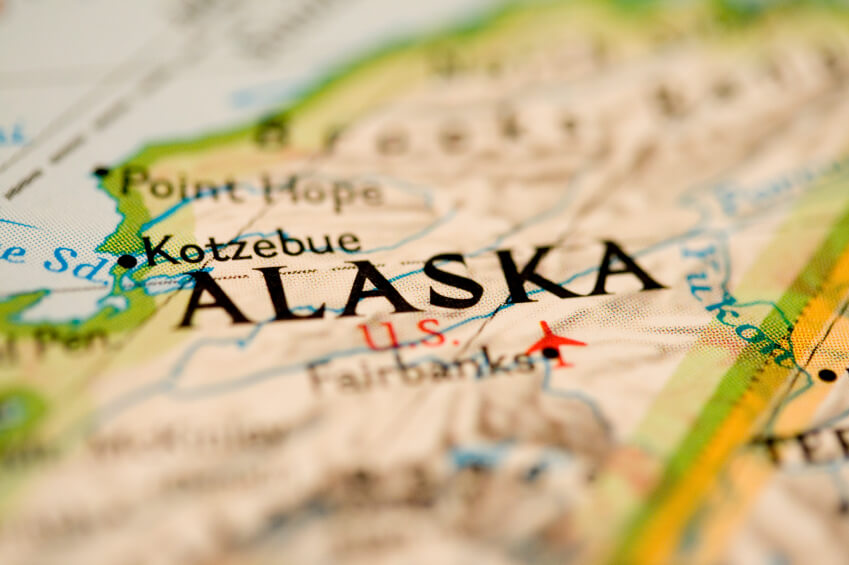Massive Alaska LNG Export Project Moves Forward; Many ‘Ifs’ Remain – Breaking Media speaks to Larry Persily ahead of NAGF
Alaska and the oil companies developing the Prudhoe Bay and Point Thompson resources located on the remote North Slope are sitting on a lot of gas that can be used by Alaskan consumers and exported if the stakeholders can work through a maze of financial and technical considerations. With a cost estimated between $45 and $65 billion (2012 dollars), there is a mountain of details to be worked out before a final investment decision is made, but the project has advanced since Breaking Energy’s last conversation with Larry Persily, Federal Coordinator for Alaska Natural Gas Transportation Projects.
Larry Persily will be speaking about federal gas export laws and providing updates on this project at the North American Gas Forum held in Washington DC September 28-30.
The North American Gas Forum once again will bring together senior decision makers from across the natural gas value chain, uniting industry, regulators and government and focus on ways the industry can collaborate to grow the regional and global natural gas and LNG markets, promote candid debate and exchange and advance the industry.
One important development – though specific to oil instead of natural gas – was the state’s oil tax regime adjustments that oil companies lobbied hard to get approved. The previous system championed by former Governor Sarah Palin was replaced at the beginning of the year with a new plan that stripped out a surcharge that increased along with oil prices. This price-sensitive component increased long-term financial planning uncertainty, the oil industry argued, while opponents of the tax regime change called it a Big Oil giveaway. The oil company compensation versus state tax revenue debate is likely to continue for some time.
Nevertheless, the companies developing North Slope oil resources – ExxonMobil, ConocoPhillips and BP – would also be some of the main investors in the Alaska LNG project – along with TransCanada and the State of Alaska – so longer-term oil tax stability removes an element of uncertainty, which is important when deciding whether to make the substantial capital investments required to build the LNG project.
“The oil policy changes are encouraging to the industry,” Persily said.
Another important development was state approval of “enabling legislation” that allows the State of Alaska to become an equity investor in the project.
“The legislation allows the state to take ownership of about 25 percent of the gas produced for the project in lieu of receiving payments for its royalty share and production taxes. The state would then sell its 25 percent of the gas and use the proceeds to pay its processing, pipeline and liquefaction expenses, depositing the balance in the state treasury. …The state would take an ownership stake in the LNG plant equal to its percentage of gas flowing down the line and would contract with TransCanada for the company to take the same percentage ownership on behalf of the state in the pipeline and North Slope gas treatment plant,” according to a statement.
“The state would be paying TransCanada to move its portion of the gas,” explained Persily.
Having TransCanada stand in for the state on the pipeline and North Slope treatment plant effectively saves the state $6 billion to $7 billion, which is roughly the same amount it would pay for its stake in the liquefaction plant, storage tanks and marine terminal. TransCanada would be allowed an at least 12% return on its equity investment – built into the tariff charged for moving the state’s gas – in return for taking on that portion of the project on the State of Alaska’s behalf.
“The pre-front-end engineering and design (Pre-FEED) phase is underway now and will cost about $400 – $500 million. The next stage would cost about $2 billion and take an additional 2 to 3 years, with a final investment decision not expected before 2019,” Persily told Breaking Energy. “But at any point the costs could change.”
Detailed information can be found on the Alaska Natural Gas Transportation Projects’ website.
The Asian LNG market into which much of the Alaskan project’s gas would be sold remains a major wildcard. Asian spot LNG prices over the summer plummeted from around $20 per million Btu to around $10/MMBtu, making the economics of piping, liquefying and shipping North Slope volumes – or any North American volumes for matter – questionable.
Read the full article on Breaking Energy








